| A few months before the event, I brought
up the topic of photography on a Burning Man website. I was surprised at
the level of hostility towards photographers. I admit the tone of
my original post was confrontational-- for which I later apologized-- but
even taking that into account, responses ran about 10-to-1 against
people with cameras at Burning Man. I had no idea people felt so strongly
about having their picture taken. I'm used to taking pictures at renaissance
faires and science fiction conventions-- places where people spend months
putting together costumes and are usually delighted to have their
pictures taken.
A woman cited the "Girls Gone Wild" videos and responded
that people do stuff at Burning Man that they wouldn't want the world to
know about. She said published photos of someone doing certain things could
"ruin their life." It is granted that some people can be jerks, and some
people with cameras can be jerks, but that doesn't mean everyone
with a camera is a jerk out to ruin your life. (And personally speaking,
if you're doing something that could "ruin" your life --regardless if it's
at Burning Man or not-- I don't think it's the photographer's behavior
that needs to be in question.)
One guy online complained that cameras at the event "ruined
his experience," but what about the photographer's experience? People with
cameras paid for their tickets, too. If someone loved to take photos, shouldn't
taking photos be allowed to be part of his Burning Man experience?
Much of Burning Man was about "radical self-expression." If painters and
dancers are encouraged to express themselves through their art, why not
photographers? The Burning Man ticket itself says you risk serious injury
or death just by attending-- why is the risk of being photographed
so much worse? In 2007, when the Man was torched early in an act
of arson, lots of people could have been hurt... but dozens of people on
Tribe.Net actually supported the action, and praised the
arsonist's act of "radical self-expression", saying the expectation
of anything at Burning Man-- even safety-- was naive.
(The arsonist wasn't so funny when he tried to torch a church a few months
later.)
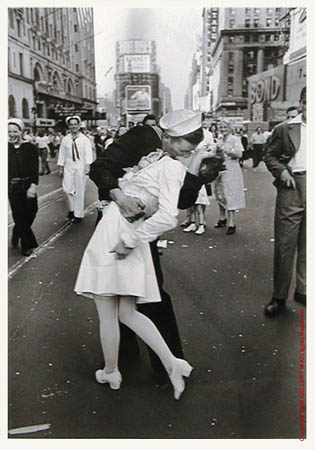 The
point that seemed to be made was that people's privacy needed to be respected.
Everyone should be polite. I'm all for that. I wasn't talking about
sticking a camera down somebody's pants or anything... But sometimes, something
amazing and beautiful happens right in front of you, and there's only
a split-second to catch it on film. It's a false assumption that the
only good photograph is a posed photograph. There's not always time
to ask someone if it's okay to take their picture. Asking first might be
the polite thing to do, but sometimes there's no time. The
point that seemed to be made was that people's privacy needed to be respected.
Everyone should be polite. I'm all for that. I wasn't talking about
sticking a camera down somebody's pants or anything... But sometimes, something
amazing and beautiful happens right in front of you, and there's only
a split-second to catch it on film. It's a false assumption that the
only good photograph is a posed photograph. There's not always time
to ask someone if it's okay to take their picture. Asking first might be
the polite thing to do, but sometimes there's no time.
I mean, look at this iconic picture at the right. This
was taken in Times Square on the day Japan surrerendered at the end of
World War II. Two people kissing on an historic day: a spur-of-the-moment,
impulsive act of joy -- and a once in a lifetime chance to capture that
image. It's inspired photographers for decades. Can you imagine the phographer
waiting until afterwards, as the two people were walking away, and
saying, "Um, excuse me, could you two people go back and do that again
so I could take your picture...?" It would be too late by then.
The moment would have passed forever. (Or worse: imagine one of
the those people not wanting their picture taken, and forcing the
photographer to destroy the historic image.)
I looked up the law, and according to what I found, it's
legal to take pictures of people pretty much anywhere --except at
military installations (for security reasons) and in places where there
is a reasonable expectation of privacy, like a bedroom or bathroom.
That's acceptable. So if you're out on the street, out in the open in a
public area, it should be okay to take pictures without asking. In a public
area where amazing things are happening, it's a reasonable expectation
that somebody might and probably will take your picture.
In fact, the law says that if people harass a photographer about taking
pictures, they can be subject to arrest.
The argument that Burning Man is a "private" event and
not subject to such laws is hogwash. How can anything with forty thousand
people be "private?" This isn't a kegger at Uncle Frank's house we're
talking about-- it's Burning Man! How can it be "private" when tickets
are sold to the public? Even the first of the Ten Principles of
Burning Man states: "Anyone may be a part of Burning Man. We
welcome and respect the stranger. No prerequisites exist for participation
in our community." That would include people with cameras, wouldn't
it?
One person online brought up the issue of "art bias"
towards photography: folks with cameras were pressured to ask permission
and register their equipment and sign all sorts of legal documents just
so they could take pictures-- but painters, sculptors and sketch artists
had no such restrictions. Those people were free to express themselves
with their art, but not photographers. Others online said the idea
of an "art bias" towards photographers was ridiculous... Well, I
wanted to see for myself. Instead of photos, I'm going to post scans
of the sketchess and cartoons I drew during the event. I wanted
to see how people treated artists. I looked on it as a challenge, to test
my limited artistic skills, and to add a new dimension to my Burning Man
experience. Proceed to the Sketchbook part of my trip
report for the results... |

 The Journey West: Beatty to Black Rock City
The Journey West: Beatty to Black Rock City
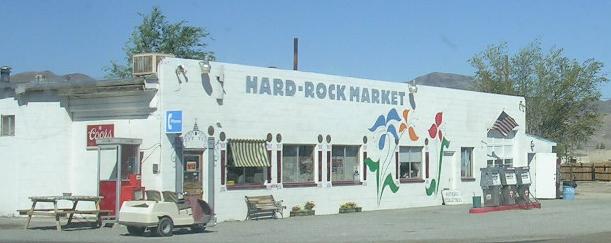
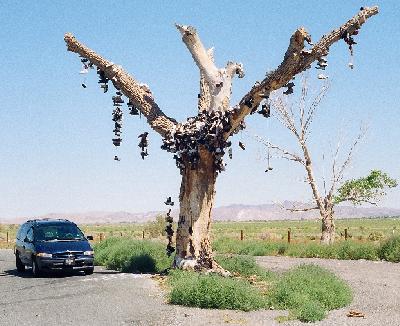
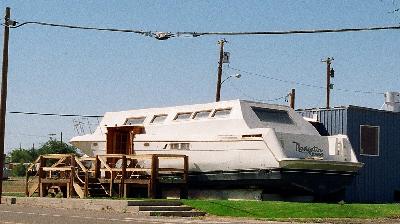


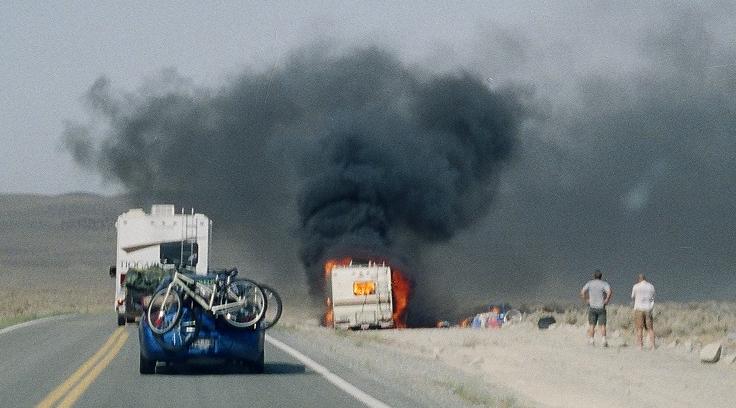
 The
point that seemed to be made was that people's privacy needed to be respected.
Everyone should be polite. I'm all for that. I wasn't talking about
sticking a camera down somebody's pants or anything... But sometimes, something
amazing and beautiful happens right in front of you, and there's only
a split-second to catch it on film. It's a false assumption that the
only good photograph is a posed photograph. There's not always time
to ask someone if it's okay to take their picture. Asking first might be
the polite thing to do, but sometimes there's no time.
The
point that seemed to be made was that people's privacy needed to be respected.
Everyone should be polite. I'm all for that. I wasn't talking about
sticking a camera down somebody's pants or anything... But sometimes, something
amazing and beautiful happens right in front of you, and there's only
a split-second to catch it on film. It's a false assumption that the
only good photograph is a posed photograph. There's not always time
to ask someone if it's okay to take their picture. Asking first might be
the polite thing to do, but sometimes there's no time.

